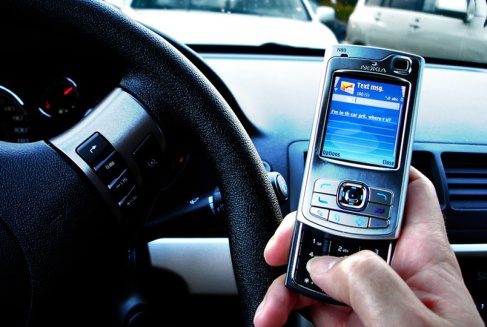It’s dark out and you’re driving home from a friend’s house. As you pull onto the highway, your phone vibrates. It’s a text from your friend. He wants to know what you’re doing tomorrow. You glance down, and then back up at the road. The coast seems to be clear. You start thumbing a response with one hand, as you continue to steer with the other. You glance down, then up, then back down again. That’s when everything goes black and you wake up in the hospital.
This is a scenario that is becoming increasingly more likely in today’s society. In 2011, at least 23 percent of all automobile accidents—or 1.3 million crashes—involved cell phone use. It is possible that those numbers have since risen. Texting is a relatively new technology that presents a risk to everyone on the road. While some states have banned it while driving completely, it’s still legal in others. We are at a crossroads where the laws have not quite caught up to the technology. Texting while driving should be illegal in all states because it is both dangerous, yet common among young adults.
Most people have heard that texting while driving is dangerous, but just how dangerous is it? Texting while driving makes a crash up to 23 times more likely than driving normally. According to the National Highway Transportation Administration, people whom text and drive are six times more likely to cause an accident than people who drive intoxicated! Actually, texting while driving is roughly the same as driving after consuming four alcoholic beverages.
When you read and send texts while operating an automobile, you are essentially driving with a BAC of .08 or higher—above the legal limit. So just what does this mean? It means that texting while driving is one of the country’s top killers. It accounts for more than 1.6 million car crashes every year, according to the National Safety Council. But just how deadly is it? The Insurance Institute of Highway Safety reports that 11 teenagers die every day as a result of texting while driving and another 330,000 are injured every year.
Five seconds. That’s the minimal amount of time your attention is taken away when you text and drive. At 55 mph, taking five seconds to look at your phone means that you have driven the length of a football field without looking at the road. Yet, despite these staggering statistics some people don’t think texting while driving is a problem. In fact, 55 percent of young adults say that texting while driving is easy. What’s even more shocking is that most young people would almost brag about their texting abilities—77 percent say they feel confident when texting and driving. Results show otherwise. Teens who text and drive spend roughly 10 percent of their time driving outside of their designated lane.
Part of the problem is that people seem to be able to easily justify texting while driving. For starters, it’s a legal grey area. There are only 39 states, plus Washington D.C., that have banned text messaging while driving, including 10 that have banned all handheld cell phone use while driving. Some people hold their phones near their windshield thinking it will improve visibility. Others increase their following distance from the cars in front of them. Many young adults have learned the behavior by observing other drivers. Half of all young drivers have seen their parents talk on a cell phone when driving, and 15 percent have seen their parents text and drive.
Nebraska is one of the 39 states that have banned texting while driving. The texting ban is a secondary law. This means that a driver can only be ticketed for texting while driving if an officer witnesses it while pulling the driver over for another violation (such as running a red light), the driver admits to it, or phone records are subpoenaed. First, the driver will be ticketed a $200 fine that will increase to $300 for a second offense. Any subsequent offenses will elicit a $500 fine and 3 points against the driver’s license.
Texting while driving should be illegal in all states. It is both dangerous and tempting to young adults. What makes it challenging is that many people find it easily justifiable. There is no federal ban on texting while driving. It has only been banned by 39 states, where it is mostly regarded as a secondary law that elicits no more than a fine of a few hundred dollars. Yet, it’s more dangerous than drinking and driving. There are 800,000 people that are texting and driving in our country right at this very moment. That’s a combined 18.4 million times increase in the likelihood that a crash will occur. Think about that next time you buckle up. Does that make you feel safe?
Sources:
“Cellphone and Texting Laws.” Cellphone and Texting Laws. N.p., n.d. Web.
“Dangers of Texting While Driving PSA – Accident Stories | AT&T.” Dangers of Texting While Driving PSA – Accident Stories | AT&T. N.p., n.d. Web.
“Death by Txt â Numbers Show SMS and Driving Donât Mix.” Death by Txt â Numbers Show SMS and Driving Donât Mix. N.p., n.d. Web.
“Nebraska Cell Phone and Text Messaging Laws.” DrivingLaws.org. N.p., n.d. Web.
“NSC Estimates 1.6 Million Crashes Caused by Cell Phone Use and Texting.” NSC Estimates 1.6 Million Crashes Caused by Cell Phone Use and Texting. N.p., n.d. Web.
“Texting and Driving Statistics.” Texting and Driving Statistics. N.p., n.d. Web.
